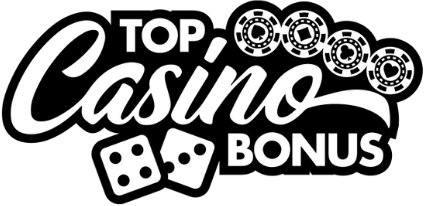Bankroll management specifically for slot players
Most folks new to playing slots think money management starts and ends with how much cash you walk into the casino with. I’ve heard countless rookies say, “I’ll just take what I can afford to lose.” That mindset might seem pragmatic, but in this craft, it’s not enough. Bankroll management isn’t about damage control, it’s your blueprint for survival and success.
Table of contents
Understanding the unique rhythm of slot play
Slots don’t play out like a table game or a sportsbook bet. These machines work on streaks, brutal cold spells followed by abrupt hot runs. They’re governed by Random Number Generators (RNGs), not your willpower or intuition. Because of that, bankroll discipline must match the game’s volatility.
Pick the right pace for your roll
The first mistake people make is blasting through spins like they’re in a race. I call it machine-gunning the reels. Instead, think in sessions. For example, if your weekly bankroll is $500, you shouldn’t burn half of it in one two-hour jump. Break it down: allocate $100 to five distinct sessions, ideally on different days or times. That allows recovery from variance and reflects structured discipline.
Match bankroll to volatility
Not all slots are made equal. High-volatility titles can go dozens of spins without a hit, then unload a big payout. Low-volatility games offer more frequent wins, but in smaller bites. You wouldn’t take a chihuahua deer hunting, right? Then don’t bring a $50 bankroll into a $5/spin high-volatility slot. If volatility’s too high, you’ll be out before the reels warm up.
Set win and loss limits before spinning
This is one of those old-school techniques newer players dismiss. They think they’ll “know when to stop.” All right, let me ask you: have your emotions ever made a smart financial decision? Thought not. You need ironclad boundaries, win and loss thresholds to protect your bankroll and your mental state.
Implement the 60/30/10 method
Here’s a method that’s saved more bankrolls than I can count: if you’re up 60% in one session, walk away and bank it. If you’re down 30%, pause, don’t double down. And that remaining 10%? Your experimental fund. You can use that for sampling branded slots based on movies or shows or switching machines. Treat it like your curious money, not your core stack.
Choose your casino wisely
This part’s often overlooked, but the house edge isn’t dictated solely by the machine. Platform return-to-player (RTP) ratios, bonus policies, and payout history matter. Look under the hood before trusting your roll to any place.
Seek out advantageous casinos
Take Jackpot City, for instance. Known for tight slot RTPs near the 96% range and generous welcome bonuses, it’s a solid base for players wanting value from consistent gameplay. Joreels Casino leans theatrical but packs a punch with niche slots and tailored promos, perfect for the kind of player who likes personality with their spins. Avoid platforms that bury terms in legal slush, it’s where bonus funds get tied up so tight you can’t breathe.
Play within an environment that suits your strategy
Trying to manage your bankroll in the raucous, fast-paced environment of a hype-driven brand is tough if you don’t match its tempo. Places like Hard Rock Casino are ideal for players who feed off vibrant themes but still want a direct, clean financial structure. On the flip side, Harrah’s Casino provides a more traditional edge, better suited to players who know their classics and prefer familiarity.
Track every spin and payout
If you’re not tracking your results, you’re flying blind. I hear folks say, “It’s just for fun, why be so rigid?” Because fun ends real fast when you can’t afford rent. Establishing a spreadsheet, or even simple pen and paper, lets you review your performance and patterns with cold logic and no delusions.
Build a session journal
Start with date, machine title, denomination, starting amount, ending amount, and total spins. Over time, you’ll start to see which machines bleed your funds and which ones offer value for your coin. I once tracked 16 sessions on the same machine and spotted that it paid 75% of its bonus rounds within the first 40 spins of a new day. That’s gold, and I wouldn’t have caught that without records.
Know when to walk, and when to pivot
This is the hard truth: sometimes you’re just not gonna win. And that’s okay. The wisdom lies in walking before chasing. But there are also times when you pivot, not chase, but shift strategy or machines. That’s not emotion talking; that’s pattern recognition.
Switch it up after specific thresholds
Let’s say you’ve gone 200 spins with barely a base game hit. Don’t keep talking yourself into “it’s gotta hit.” You’re not due, the machine doesn’t owe you. Shift games or features; better yet, break the session entirely. Returning with a reset head and fresh bankroll lens matters far more than grinding it into zero.
Final wisdom: discipline equals longevity
The cheap thrill of one big win will never outweigh the competence and confidence that come from sustained, well-managed play. Bankroll management for slot players isn’t optional; it’s survival. You can’t control your outcomes, but you can master your inputs, how much you bet, when you play, and when you stand up.
Don’t treat your bankroll like a weekend allowance. Treat it like your oxygen tank in a deep-sea dive. Respect it, ration it, and understand it’s what keeps you in the game, not luck, not vibes, not superstition. And above all: never spin without a plan.





0 Comments